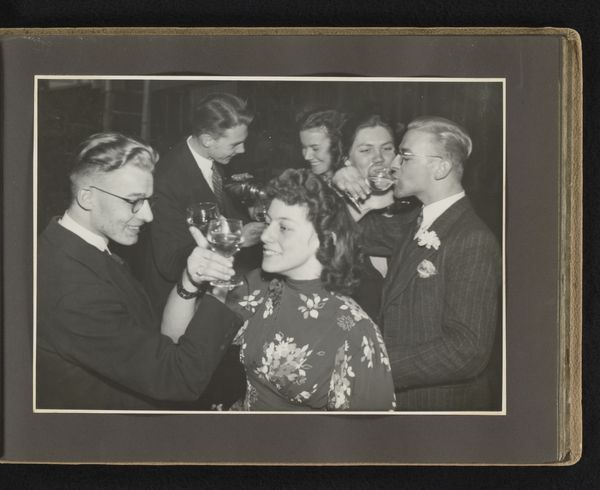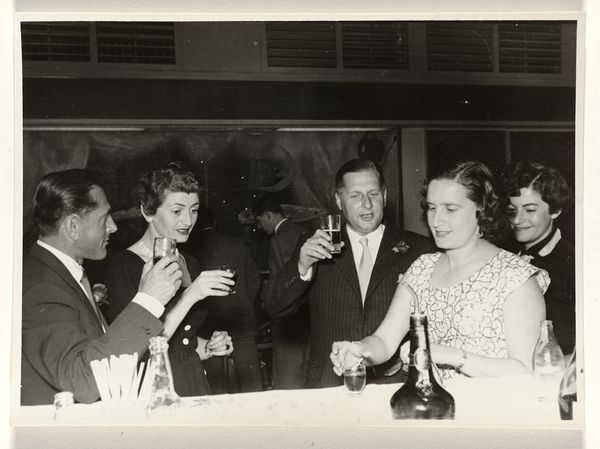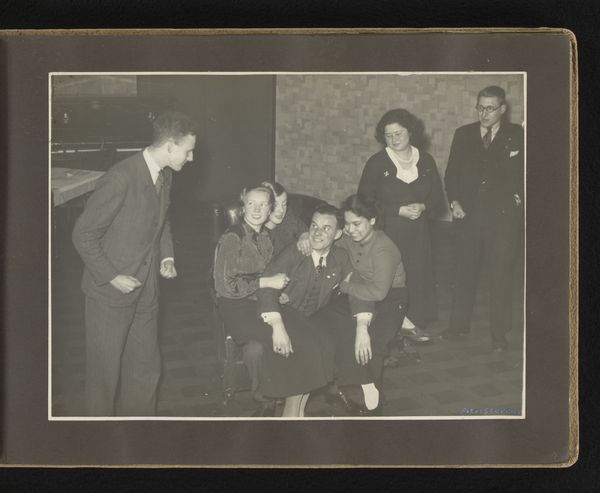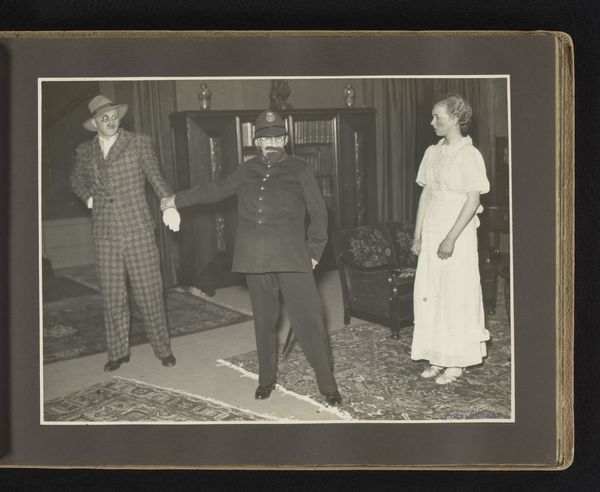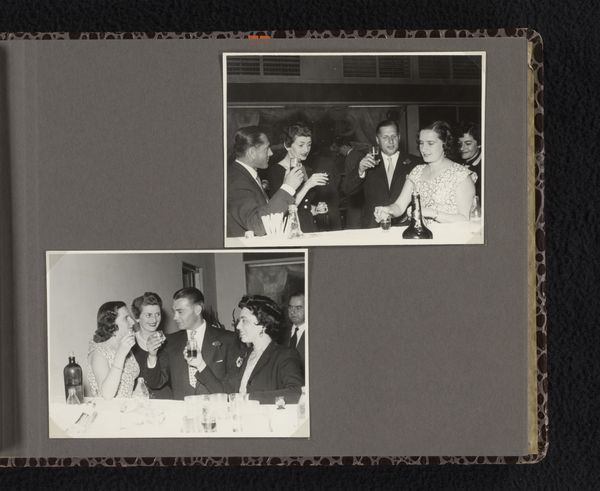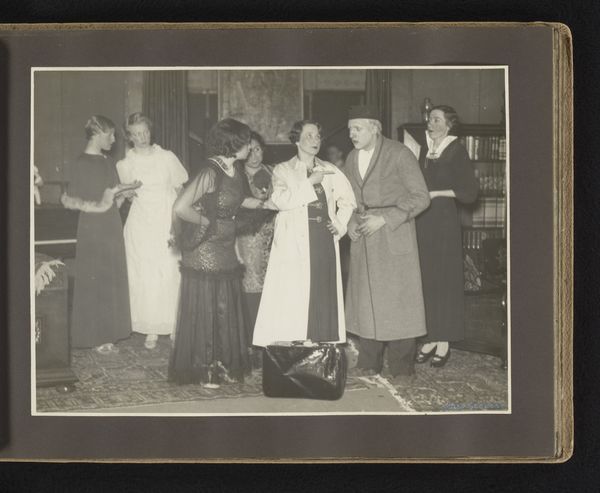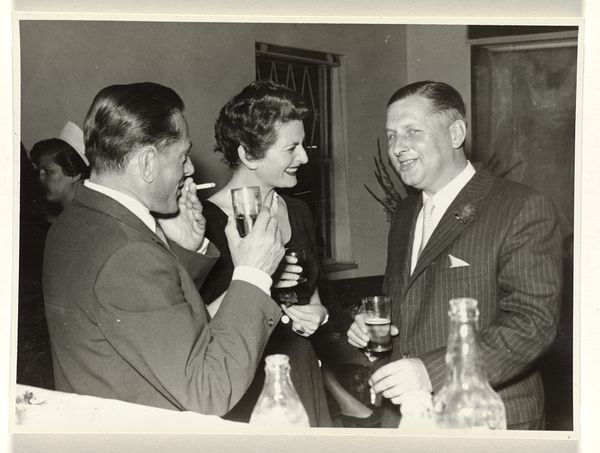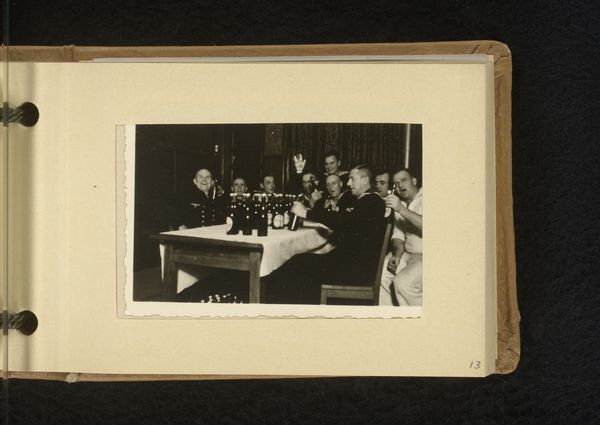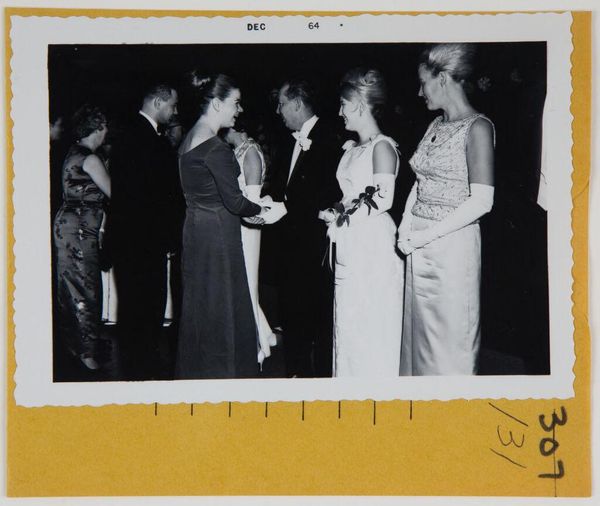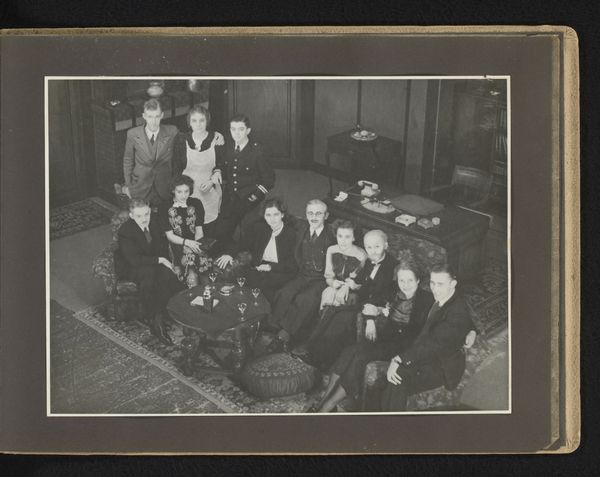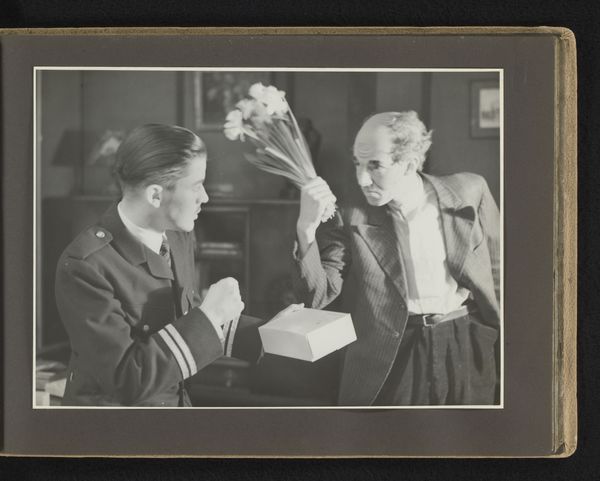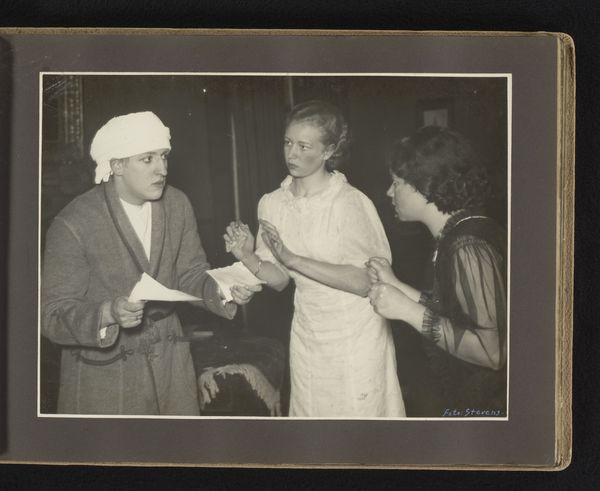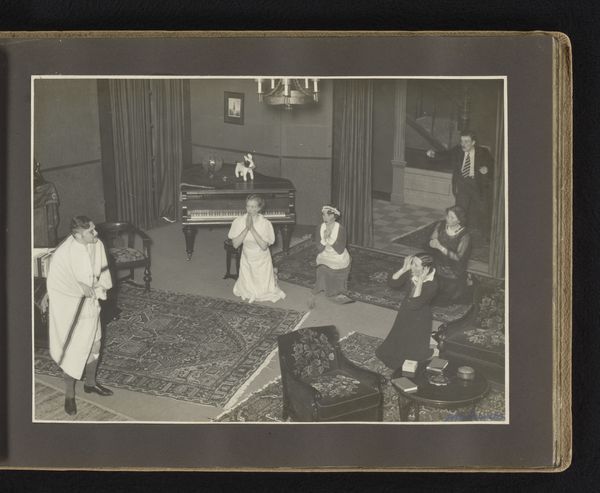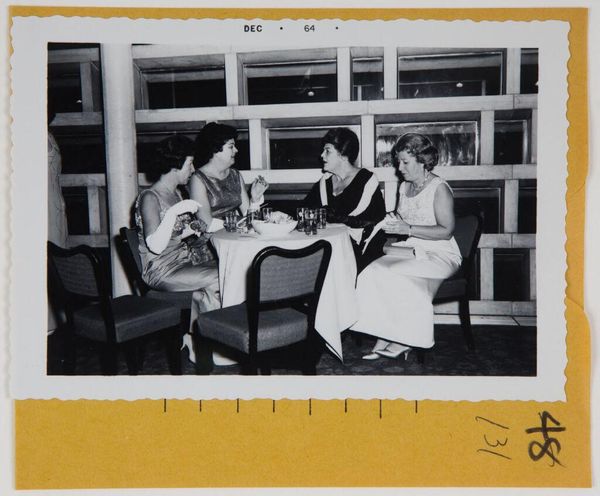
photography, gelatin-silver-print
#
portrait
#
photography
#
culture event photography
#
historical photography
#
gelatin-silver-print
#
genre-painting
#
realism
Dimensions: height 173 mm, width 234 mm, height 211 mm, width 285 mm
Copyright: Rijks Museum: Open Domain
Curator: The photograph before us is titled "Leerlingen van de MTS te Haarlem," and was created between 1935 and 1936 by Fotobureau Stevens. Editor: There’s a quiet joy emanating from the scene, despite the rather drab tones. It feels intimate; a gathering after some kind of accomplishment, perhaps? The arrangement is really capturing—notice how the figures are grouped to almost mirror the arrangement of items and flower arrangement in the middle. Curator: Indeed, that sense of celebration is palpable. Examining the materials, the gelatin-silver print highlights a significant shift in photographic processes during this era. Gelatin silver enabled mass production and greater tonal range. It speaks to the accessibility of photography to capture such gatherings outside elite circles. The question then is who exactly could access it and who decided which memories were captured? Editor: Access is so key! I wonder, who were these students? And how did socio-political forces play into creating an institution where working-class members could further their means? Curator: Precisely. Note, too, how the flowers, wine, and attire subtly signify aspiration. They’re not overtly luxurious, but they communicate a striving for upward mobility—a reflection of societal values influencing the labor force and production at the time. Editor: And let's think about that staging. It looks so natural, but how much was arranged for the photographer, how much was natural? What can we deduce from this particular depiction of success, of a good education—what was communicated to others and future audiences about labor via a scene such as this one? Curator: You’ve hit upon something crucial about realism—how do cultural ideas find a place in materiality? Consider how the subjects choose to engage with the camera and the photographer from behind the camera. Even through the formal restraints and staging, how are they making the moment their own, or at least trying to? Editor: I think looking closely at an image like this, considering its institutional contexts alongside photographic conventions, is vital to decoding a complex network of material culture and shared aspirations. Curator: I agree; to think of photography not as a mimetic visual language but rather as another method of accessing culture is a start to understanding. Editor: Exactly. Every detail—from the chemical processes involved in creating the gelatin silver print to the institutional portrait format of photographic practices in the 1930s—adds layers to our interpretation.
Comments
No comments
Be the first to comment and join the conversation on the ultimate creative platform.
